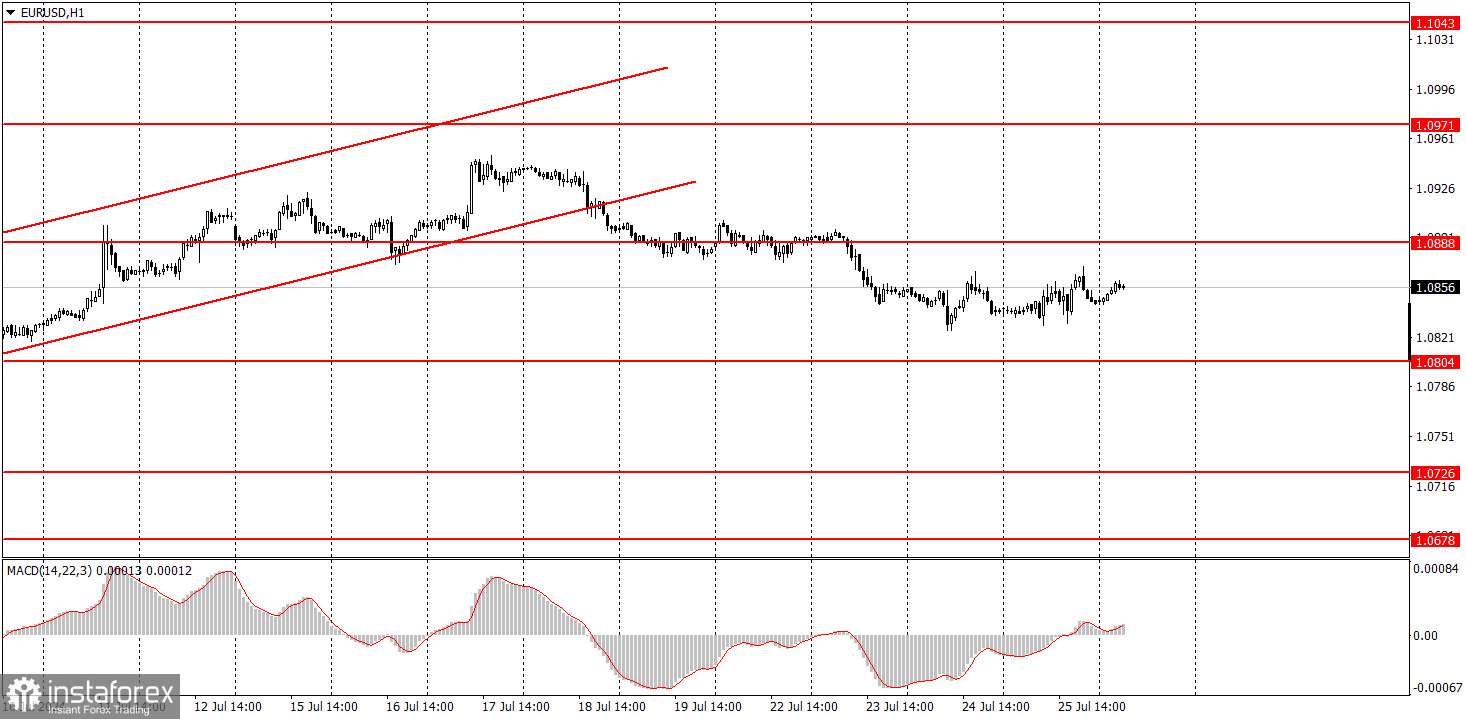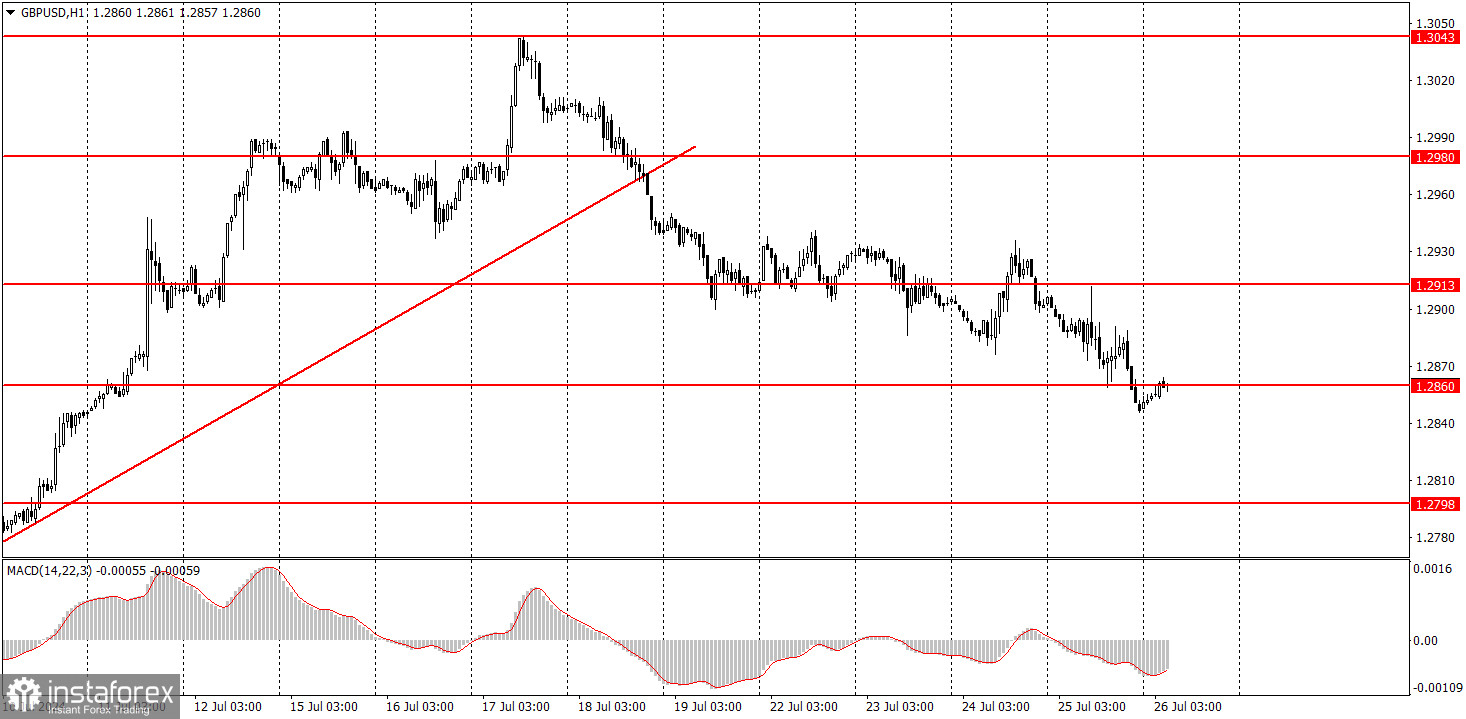Analysis of macroeconomic reports:

Few macroeconomic events are scheduled for Friday, and none are particularly significant. The event calendars for the European Union, Germany, and the United Kingdom are empty. At the same time, the US docket will feature the University of Michigan's Consumer Sentiment Index, the Personal Consumption Expenditures Price Index, and data on personal income and expenditures. The first two reports might provoke a minor market reaction. As observed yesterday, two much more important reports on GDP and durable goods orders had almost no impact on market trading behavior. Volatility remains low for both instruments.
Analysis of fundamental events:
There is absolutely nothing noteworthy among Friday's fundamental events. No significant speeches or other events are scheduled, so it appears that we won't see any interesting movements today that could offer trading opportunities.
General conclusions:
Today, the market will only have a few US reports to review, which will be released in the afternoon. Therefore, if we are to expect any notable movements, it will likely only occur during the US trading session. It is difficult to predict whether the dollar will continue its rise today. Market movements are very weak, prices are constantly adjusting, and corrections (even local ones) can take a week to materialize.
Basic rules of a trading system:
1) The strength of a signal is determined by the time it took for the signal to form (bounce or level breakthrough). The shorter the time required, the stronger the signal.
2) If two or more trades around a certain level are initiated based on false signals, subsequent signals from that level should be ignored.
3) In a flat market, any currency pair can produce multiple false signals or none at all. In any case, it's better to stop trading at the first signs of a flat market.
4) Trades should be opened between the start of the European session and mid-way through the U.S. session. All trades must be closed manually after this period.
5) In the hourly time frame, trades based on MACD signals are only advisable amidst substantial volatility and an established trend, confirmed either by a trendline or trend channel.
6) If two levels are too close to each other (from 5 to 20 pips), they should be considered as a support or resistance zone.
7) After moving 15 pips in the intended direction, the Stop Loss should be set to break-even.
What the charts show:
Support and Resistance price levels can serve as targets when buying or selling. You can place Take Profit levels near them.
Red lines represent channels or trend lines that depict the current trend and indicate the preferred trading direction.
The MACD (14,22,3) indicator, encompassing both the histogram and signal line, acts as an auxiliary tool and can also be used as a source of signals.
Important speeches and reports (always noted in the news calendar) can profoundly influence the price dynamics. Hence, trading during their release calls for heightened caution. It may be reasonable to exit the market to prevent abrupt price reversals against the prevailing trend.
Beginners should always remember that not every trade will yield profit. Establishing a clear strategy, coupled with effective money management, is key to long-term success in trading.
 English
English 
 Русский
Русский Bahasa Indonesia
Bahasa Indonesia Bahasa Malay
Bahasa Malay ไทย
ไทย Español
Español Deutsch
Deutsch Български
Български Français
Français Tiếng Việt
Tiếng Việt 中文
中文 বাংলা
বাংলা हिन्दी
हिन्दी Čeština
Čeština Українська
Українська Română
Română


